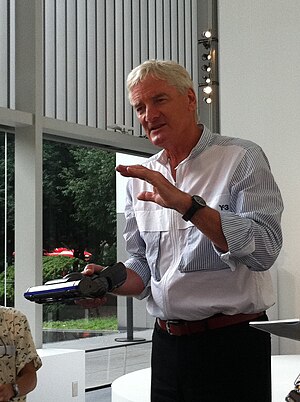
The general perception of engineers is a warped one.
We are the car mechanics fixing the oil leak. Or, if we’re lucky, a white coated scientist tucked away in a dusty laboratory. Never adventurers. Never explorers. And definitely not daredevils. It’s not surprising then that too few young people stumble across the profession.
Sure, the terrain might be a solar panel or a circuit board, but these can be as lofty and as perilous as a mountain range. Engineers and inventors see the world differently. They want to change it, to make it better. They see what lies ahead, not only what has come before. They toss aside convention, almost stubbornly so.
My foundation adopts the same principles. We run a competition that invites university students to design something that solves a problem. Be clever. Be brave. And don’t be afraid to think well off the grid. Being original is difficult in a day and age where so much has already come before. But often simple observations can inspire leaps in understanding.
In designing a vacuum that didn’t choke on dust, I looked to a sawmill. I saw centrifugal force being used to separate dirt and wondered – could the same principle be used on a smaller scale? This was the very moment that set me on a journey to reinvent the vacuum cleaner.
Success in the James Dyson Award is often as a result of this same thought process. Last year’s winner addressed the issue of irrigating crops in arid climates. Irrigation practices have been around for thousands of years. They’ve surely been honed, but still rely upon a principally inefficient delivery system.
Edward Linacre had an idea. Recognizing that life existed in dry climates despite a startling lack of water, he examined how that life was able to sustain itself. In a question about crop irrigation, he looked to evolution for an answer. He looked to a beetle.
The Namib beetle is an ingenious species, living in one of the driest places on earth. With half an inch of rain per year, the beetle survives by drinking the dew it collects on the hydrophilic skin of its back in the early mornings.
Edward made the link. He recognized that even the driest air contains water molecules which can be extracted by lowering the air’s temperature to the point of condensation. His invention, AirDrop, pumps air through a network of underground pipes, to cool it to the point at which the water condenses. Delivering water directly to the roots of plants.
Inspiration needn’t be as far removed as a beetle. Existing technology often inspires new technology. A researcher with the Japan Advanced Institute of Science and Technology was using a smartphone that contained a proximity sensor to turn the display off and on. He wondered if the same technology could be applied to headphones to help them work better.
By adding a proximity sensor in the ear bud, his invention detects the angle in which it is placed in the ear, sensing if it is on the right or left side. Audio levels are adjusted accordingly to ensure the best sound is produced. Ultimately a very simple application of an existing technology – but an ingenious one nonetheless.
Brilliant thinking doesn’t always result in success.
Read more . . .
Bookmark this page for “James Dyson Award” and check back regularly as these articles update on a very frequent basis. The view is set to “news”. Try clicking on “video” and “2” for more articles.








